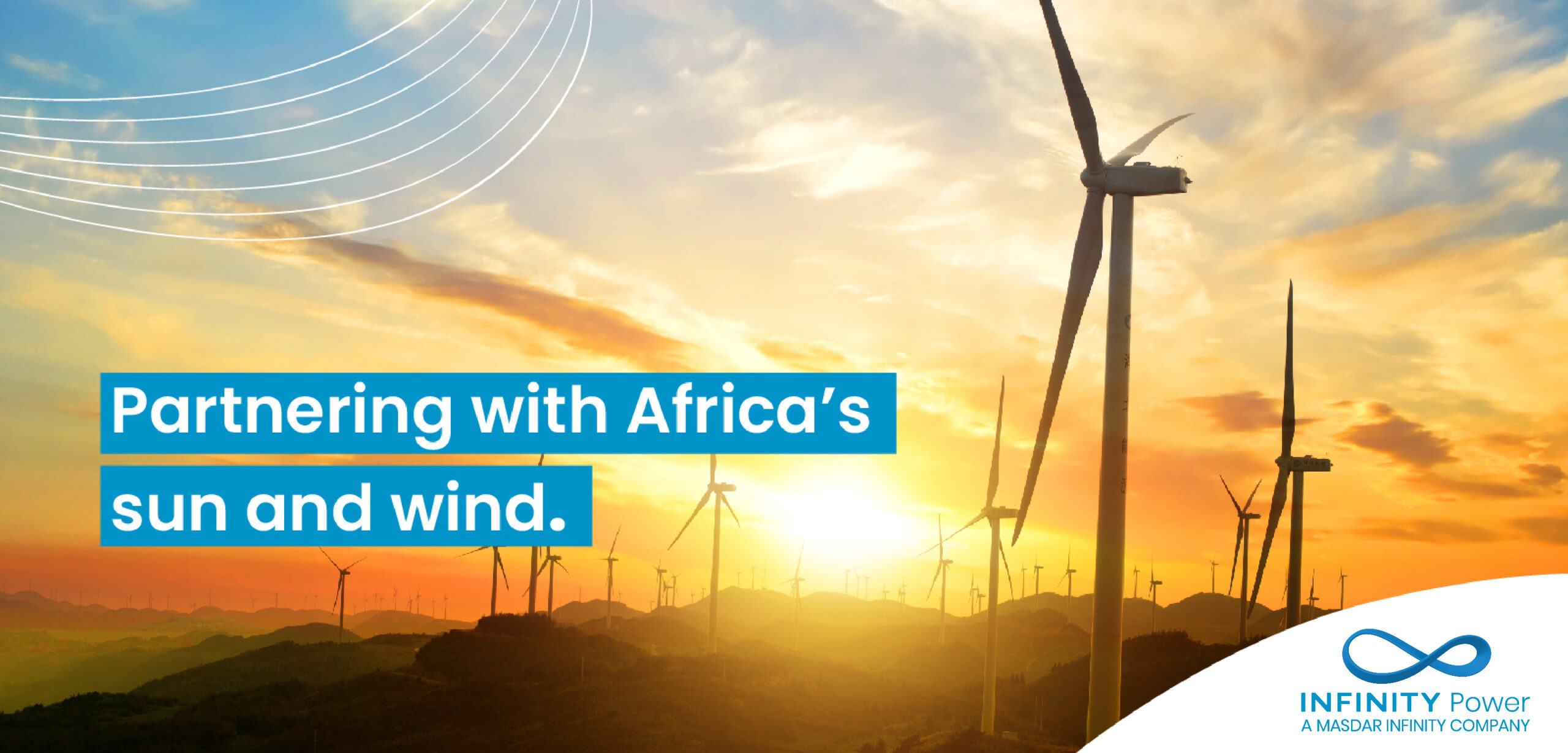- Maersk reaches preliminary agreement to grab 51% stake in Egypt’s Zafarana wind farm. (M&A Watch)
- Morocco’s central bank buys EUR 200 mn worth of sustainable bonds from the World Bank. (Climate Finance)
- Masdar completes secondary listing of inaugural green bond on ADX. (Capital Markets)
- Iran breaks ground on the second phase of the Bushehr nuclear power plant. (Also on Our Radar)
- France pushes for methane emission limits on fossil fuel imports. (What We’re Tracking Today)
- Mineral prices are highly vulnerable to geopolitical fragmentations, IMF’s World Economic Outlook finds. (Macro Picture)
- South Africa will debut the first world’s virtual wheeling program for great renewable energy accessibility. (On Your Way Out)

Wednesday, 11 October 2023
Maersk reaches preliminary agreement to grab 51% stake in Egypt’s Zafarana wind farm
TL;DR
WHAT WE’RE TRACKING TODAY
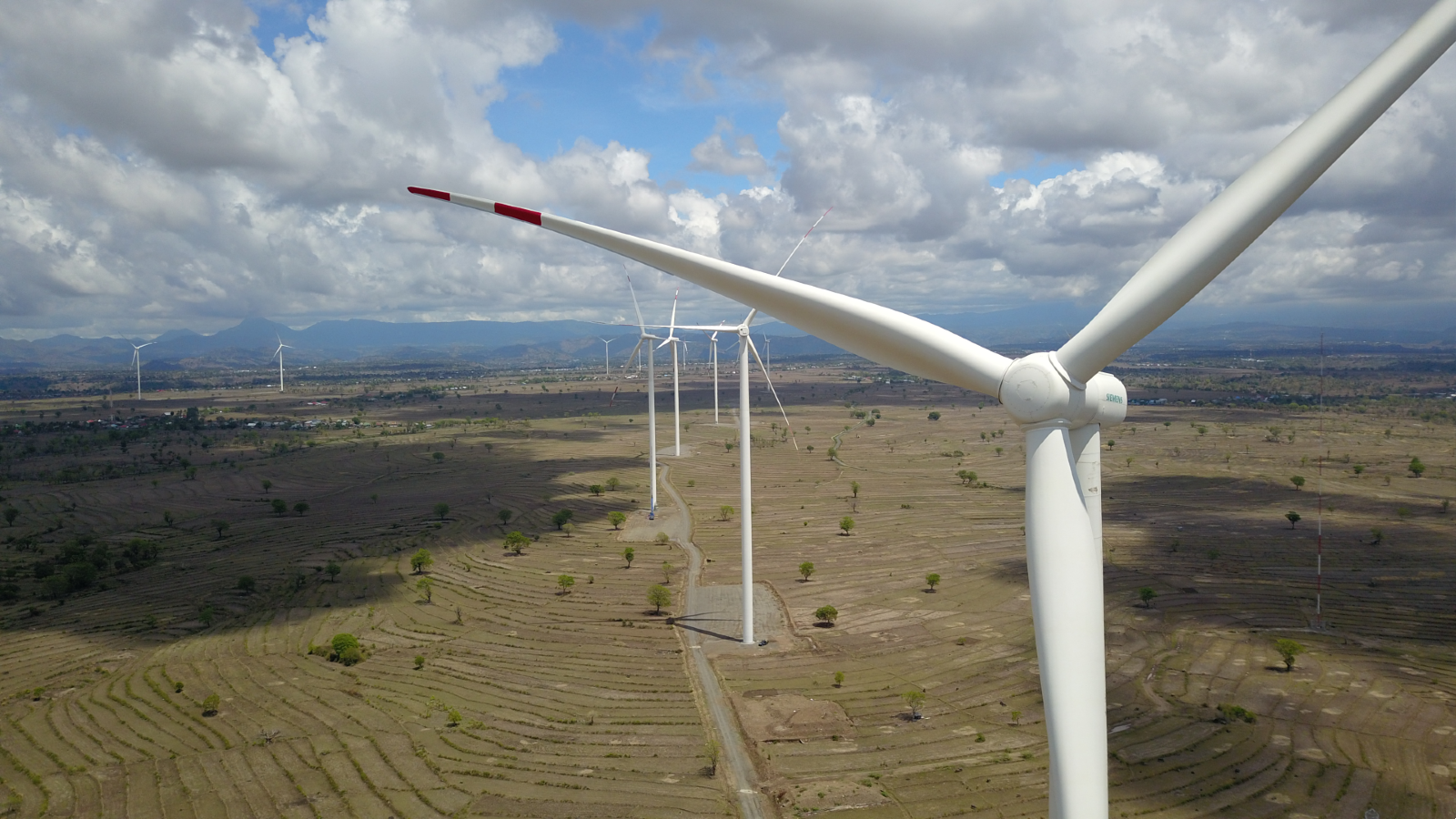
Good morning, wonderful people. We have a light and brisk issue for you this morning as we inch closer to the weekend.
THE BIG CLIMATE STORY- Danish shipping giant Maersk has reached a preliminary agreement with Egypt on the acquisition of a 51% stake in the 545 MW Zafarana wind farm, a government source told Enterprise Climate.
^^ We have the details on this story and more in the news well, below.
THE BIG CLIMATE STORY OUTSIDE THE REGION- Change of mindset still needed by the World Bank: US Treasury Secretary Janet Yellen said the World Bank has made improvements in reforms related to its operations to better tackle climate change and other challenges yet still needs “cultural change” to deploy private sector capital, Reuters reported on Tuesday. Yellen said the Washington-based lender has begun working on principles to utilize concessional funding for projects that address global challenges. It also began utilizing improved analytical and diagnostic tools, including country climate and development reports. However, more needs to be done to allow the bank’s staff to deliver desired outcomes, Yellen said. "This will require internal process improvements that increase agility and speed up decision-making without sacrificing quality, as well as cultural change to accelerate private sector mobilization and responsible risk-taking,” she added.
WATCH THIS SPACE #1- France pushes for methane emission limits on fossil fuel imports: France is trying to rally support from EU countries to adopt a policy that would see the bloc gradually impose methane emission limits on fossil fuel imports starting in 2026, according to a document — dated October 6 — seen by Reuters. The policy proposes importers must prove that 70% of their fossil fuel imports comply with the EU methane rules, with the share increasing each year until 100% are covered in 2029. “Imposing methane leakage criteria on European hydrocarbon imports is a climate imperative, does not raise measurement difficulties, and is part of a global dynamic,” France said in the document. The non-profit Clean Air Task Force has estimated that such regulations could cut global methane emissions in the oil and gas sector by up to 30%.
Who’s on board? While some EU officials said it was not yet clear how many countries backed the proposal, Europe's biggest gas buyer, Germany, as well as Poland, previously said they would be willing to extend the EU rules to cover fossil fuel imports. Hungary and Romania have previously sought weaker rules, while some countries have questioned whether it is feasible to enforce the EU's standard abroad.
Regional oil + gas exporters will be impacted if the regulations go through: Qatar and Algeria are the third and fourth biggest suppliers of natural gas to the EU, coming behind the US and Russia. 10.9% of the EU’s natural gas imports come from Qatar and 9.9% come from Algeria, according to data collected by Eurostat for 2Q 2023. Saudi Arabia and Libya came in fifth and sixth place in the share of EU oil imports, with the former representing 9% of oil imports, and the latter accounting for 8.1% of EU petroleum oil imports, according to EU data.
WATCH THIS SPACE #2- No end in sight for oil: OPEC raised its forecasts for world oil demand through the middle of the century, its 2023 World Outlook report (pdf) showed, despite an increased deployment of renewable energy to avert climate change impacts. It sees oil demand rising by c. 16% to reach 116 mn barrels a day (mb/d) by 2045, around 6 mn/d higher than forecasts in its report last year with “the potential to be even higher.” It said the projected increase in demand by the middle of the century would require c. USD 610 bn on average annually.
What they said: “Calls to stop investments in new oil projects are misguided and could lead to energy and economic chaos. History is replete with numerous examples of turmoil that should serve as a warning for what occurs when policymakers fail to acknowledge energy’s interwoven complexities,” OPEC Secretary General Haitham Al Ghais said, according to the report. He also acknowledged the necessity to lower emissions through technologies including clean hydrogen, carbon capture utilization and storage, and direct air capture.
ALSO- OPEC will be given a stage during COP28: OPEC will have a pavilion for the first time during COP28, Bloomberg reports, citing statements by OPEC’s Secretary General Al Ghais. “The oil industry will be there at COP and we will be there,” Al Ghais said during a forum in UAE’s Fujairah. “I hope all voices will be at the table at COP28,” he added. The participation is expected to further fuel concerns of an increased presence by the oil industry during the Dubai-hosted climate summit.
DATA POINT- Natgas is on a downward path through to 2026: Global natural gas demand is expected to dip in the coming years on the back of lower consumption in mature markets, according to a report released by the International Energy Agency (IEA). It sees global gas demand growing by an average of 1.6% annually between 2022 and 2026, down from an average of 2.5% a year between 2017 and 2021. The report forecasts overall gas demand from mature markets in North America, Europe, and some nations in Asia Pacific to fall by 1% annually through 2026 after a peak in 2021. It attributes the decline to an “accelerated rollout of renewables and improved energy efficiency” in those markets.
What this could mean for the region: A fall in demand in mature markets globally — which represent around half of global gas consumption — means that any growth will be mainly concentrated in some gas-rich economies in MENA and fast-growing Asian markets, the report notes. China alone is forecasted to account for almost half of the total growth in global gas demand between 2022 and 2026 “to serve its industrial production, power sector and urban areas,” it adds.
THE DANGER ZONE- Biodegradable plastic releases more toxins into the environment when broken down compared to conventional alternatives, according to a study (pdf) in the Journal of Hazardous Materials. The researchers measured toxicity levels that biodegradable plastic (BP) photodegradation and composting has on PLHC-1 cells — labgrown cells derived from Poeciliopsis, a species of small freshwater fish. They found that after a 24 hour sunlight exposure period, BPs decreased cell viability by up to 70% compared to single-use and recycled plastics due to an excessive amount of chemical releases when the bio-based materials broke down.
SOUND SMART- Photodegradation refers to the process through which materials decompose from sunlight exposure and photon absorption, whether it be from infrared radiation, visible light, or ultraviolet light. “Bio-based and biodegradable plastics still require additives to improve their properties such as elasticity, color, electrostatic behavior, strength and toughness,” the study notes, cautioning that these additions render the materials more likely to release a significant amount of the chemicals “which are not covalently bound to the polymer” into ecosystems, posing health hazards to both humans and wildlife.
A “scientifically questionable" study: The study — which has drawn criticism from the EU’s leading organic plastics association European Bioplastics — involved researchers extracting chemicals from the various types of BPs from methanol before sampling them on PLHC-1 cells, unlike the true nature of plastic degradation in the real world. Critics say the use of ethanol could have altered the chemical composition of the sampled BPs.
REMEMBER- The UN has set out a plan to slash 80% of global plastic waste by 2040: The United Nations Environment Programme laid out a strategy back in May for reducing the world’s plastic waste levels by nearly 80% in less than two decades using pre-existing technologies. The replacement of single-use plastics with biodegradable materials could contribute another 17% to the target, according to UNEP projections. UNEP’s roadmap would reduce an estimated 187 mn tons of plastic waste and prevent damages to the tune of USD 3 tn over the next 20 years, but would need c. USD 65 bn in annual investments to be realized. The world produces some 400 mn tons of plastic waste annually.
|
***
YOU’RE READING ENTERPRISE CLIMATE, the essential MENA publication for senior execs who care about the world’s most important industry. We’re out Monday through Thursday by 5am Cairo / 5am Riyadh / 6am UAE.
EXPLORE MORE OF ENTERPRISE ON THE WEB — tap or click here to read EnterpriseAM, EnterprisePM, and The Weekend Edition on our powerful new website packed with reader-friendly features.
Were you forwarded this email? Get your own subscription without charge here or reach out to us on climate@enterprisemea.com with comments, suggestions and story tips.
***
CIRCLE YOUR CALENDAR-
The UAE will host the UNCTAD World Investment Forum from Monday, 16 October to Friday, 20 October in Abu Dhabi. This year’s theme focuses on sustainable investments, with a diverse range of climate financing sessions on promoting investments in the blue economy, agrifood systems, sustainable infrastructure, carbon markets, the circular economy, strategic minerals for decarbonization, and sustainable tourism. Some sessions will tackle reform of financial institutions needed to reach net zero, such as a session on integrating nature-related risk into capital markets and financing an equitable nature economy. Public sector investments and stock exchange action on climate disclosures will also be discussed.
Oman will host the Duqm Economic Forum from Monday, 16 October to Tuesday, 17 October in Duqm. The two-day event — organized by the Public Authority for Special Economic Zones and Free Zones — will showcase green investment windows and possible partnerships at the Special Economic Zone at Duqm.
Egypt will host the fourth meeting of the COP27 Transitional Committee from Tuesday, 17 October to Friday, 20 October in Aswan. The meeting aims to establish institutional arrangements, modalities, governance structures, and terms of reference for the landmark Loss and Damage Fund while expanding sources for climate funding under the program.
Check out our full calendar on the web for a comprehensive listing of upcoming news events, national holidays and news triggers.
M&A WATCH
Maersk reaches preliminary agreement to grab 51% stake in Egypt’s Zafarana wind farm
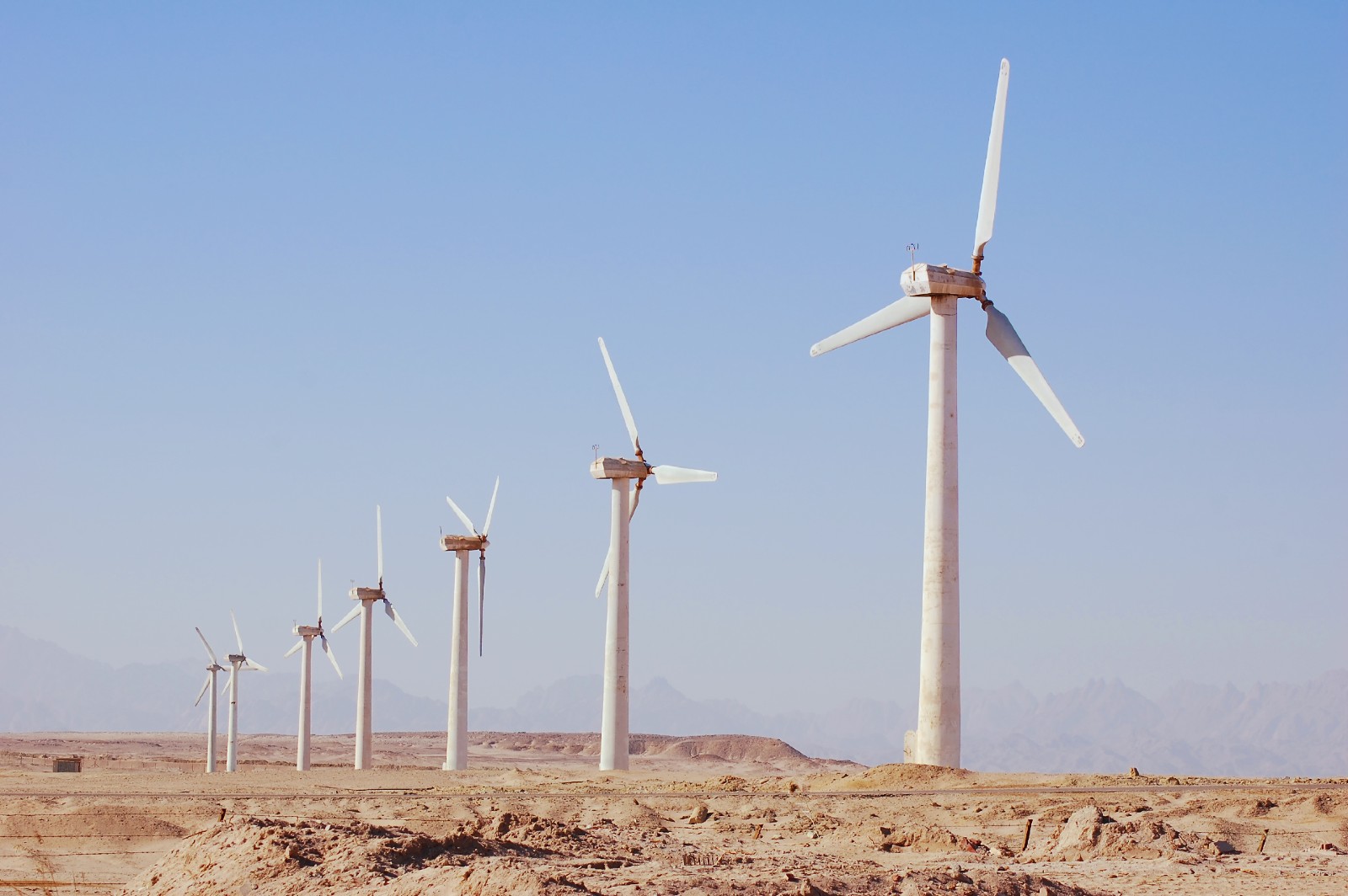
One step closer for the Zafarana wind farm acquisition: Danish shipping giant Maersk has reached a preliminary agreement with Egypt on the acquisition of a 51% stake in the 545 MW Zafarana wind farm, a government source told Enterprise Climate.
What we know: The Danish firm will be acquiring the operating phases of the farm, leaving remaining phases still under development up for grabs, according to the government official. The government has not yet received offers from investors for the remaining phases, he added.
REMEMBER- Egypt is selling off shares in the state-owned 580 MW Gabal El Zeit wind farm along with the state-owned 545 MW Zafarana wind farm as part of a sale containing over 30 companies and assets earmarked for privatization by the government. The sale comes under an ambitious plan by the government to bring in USD 5 bn in investment through the privatization of state-owned companies and assets.
There were already indications: An updated state ownership policy document that was leaked to the press in August showed the government agreeing in principle to sell a stake to Maersk. The Danish firm will receive the first four phases of the power plant, while the remaining four phases will be allocated to investors for green hydrogen projects, the document showed.
A celebratory handshake soon? Final agreements are expected to be signed in December, the source tells Enterprise. The financial agreements have not been finalized amid worries by investors regarding further FX fluctuations, he added.
Maersk has big plans for Egypt: Maersk is seeking half of the asset to help produce green methanol in Egypt. The company last week signed a framework agreement with the government for a green fuel project in the Suez Canal Economic Zone, with the first phase requiring USD 3 bn in investment.
CLIMATE FINANCE
Morocco’s central bank buys EUR 200 mn worth of sustainable bonds from the World Bank
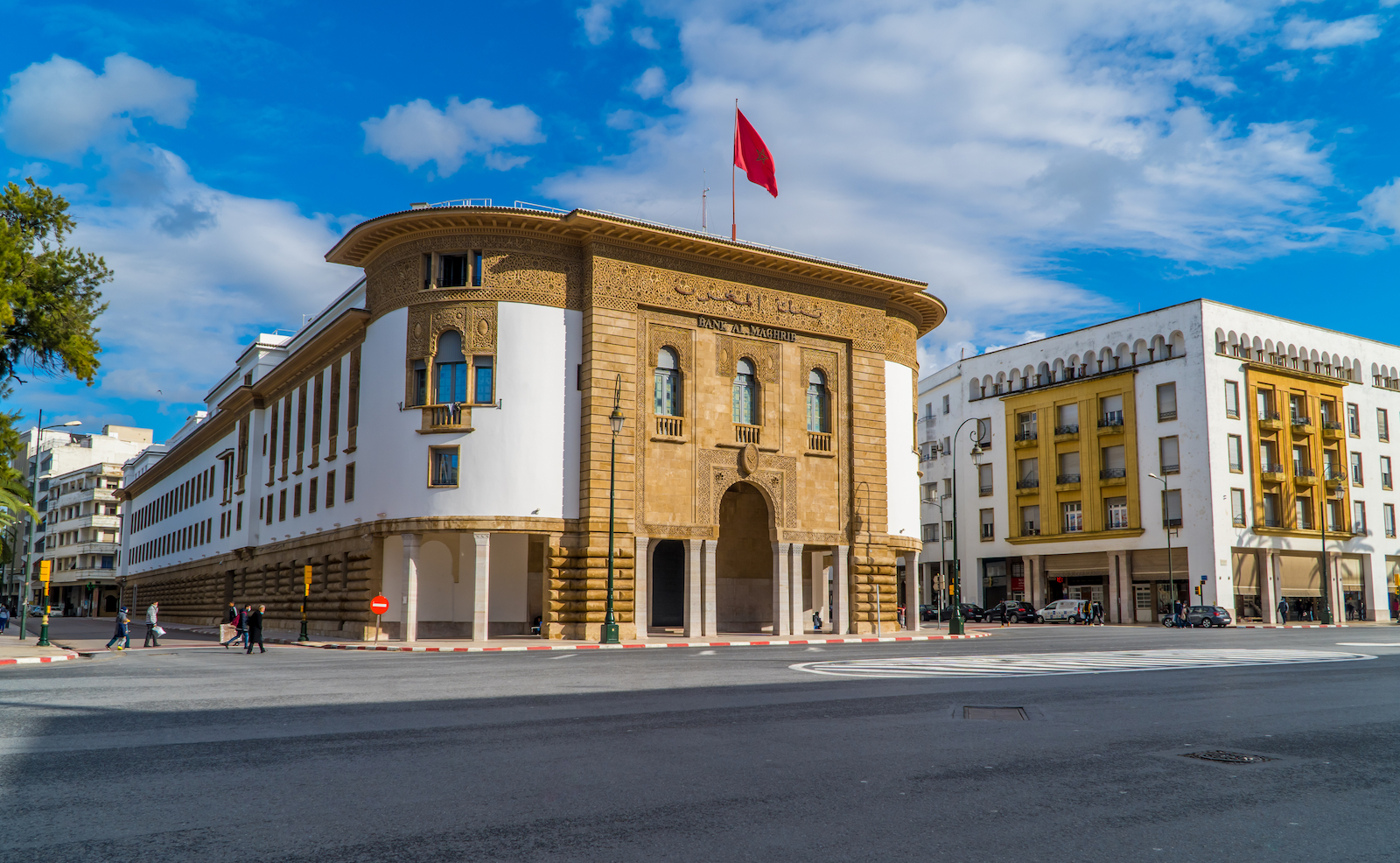
Morocco’s central bank buys World Bank bonds: Bank Al Maghrib — the Central Bank of Morocco — has purchased EUR 200 mn worth of sustainable development bonds from the World Bank to bolster the Washington-based lender’s climate financing efforts, according to a statement (pdf). The EUR 100 mn three-year and EUR 100 mn five-year sustainable development bond transactions will back the financing of the World Bank’s sustainable development activities and pay annual fixed rate coupons to the Moroccan central bank. They mature on October 6, 2026, and October 6, 2028, the statement notes.
What they said: “The transactions are an opportunity for Morocco, as the first host of the annual meetings on the African continent in 50 years, to raise awareness for the urgency of mainstreaming climate action in the region and across the continent,” the statement read.
REMEMBER- Morocco continues to be among the countries in the region most impacted by climate change. It has entered its fifth consecutive year of drought, shifting into an era of water scarcity that officials say is one of the biggest threats facing the kingdom. The North African country is working on projects for recycling wastewater, building more desalination plants, expanding the more efficient drip irrigation methods of cultivation, and building channels to connect rivers and supply more regions with water, according to officials.
CAPITAL MARKETS
Masdar completes secondary listing of inaugural green bond on ADX

ADX welcomes Masdar’s secondary listing of debut green bond: UAE state-owned renewable energy giant Masdar has marked the secondary listing of its debut USD 750 mn green bond in the Abu Dhabi Securities Exchange (ADX), according to a press release (pdf). The 10-year bond — which carries a 4.875% coupon rate with a maturity date of July 2033 — will fund new clean energy projects, the statement notes.
About the debut sale: Masdar raised USD 750 mn from its debut green bond issuance in July, netting over USD 4.2 bn in demand from regional and international investors. Net proceeds from this bond and other future offerings will be used to invest exclusively in “dark green” renewable energy projects, with most earmarked for developing economies and climate-vulnerable countries, it said at the time.
We knew this was coming: The renewables company said it was planning a secondary listing of its green bond offering on the ADX last August as it marked the offering on the London Stock Exchange. It said at the time that proceeds from all bond offerings under its ambitious program will be directed towards projects including solar, wind, renewable power transmission and others.
A green bond listing bonanza ahead of COP28? ADX highlighted a rise in the number of green bond listings this year ahead of COP28, the statement notes. The stock exchange welcomed the Abu Dhabi National Energy Company’s (Taqa) secondary listing of its USD 1.5 bn dual-tranche green bond last month, and earlier this year the Sweihan PV Power Company completed its secondary listing of USD 700 mn in green bonds.
MACRO PICTURE
Mineral prices are highly vulnerable to geopolitical fragmentations, IMF’s World Economic Outlook finds
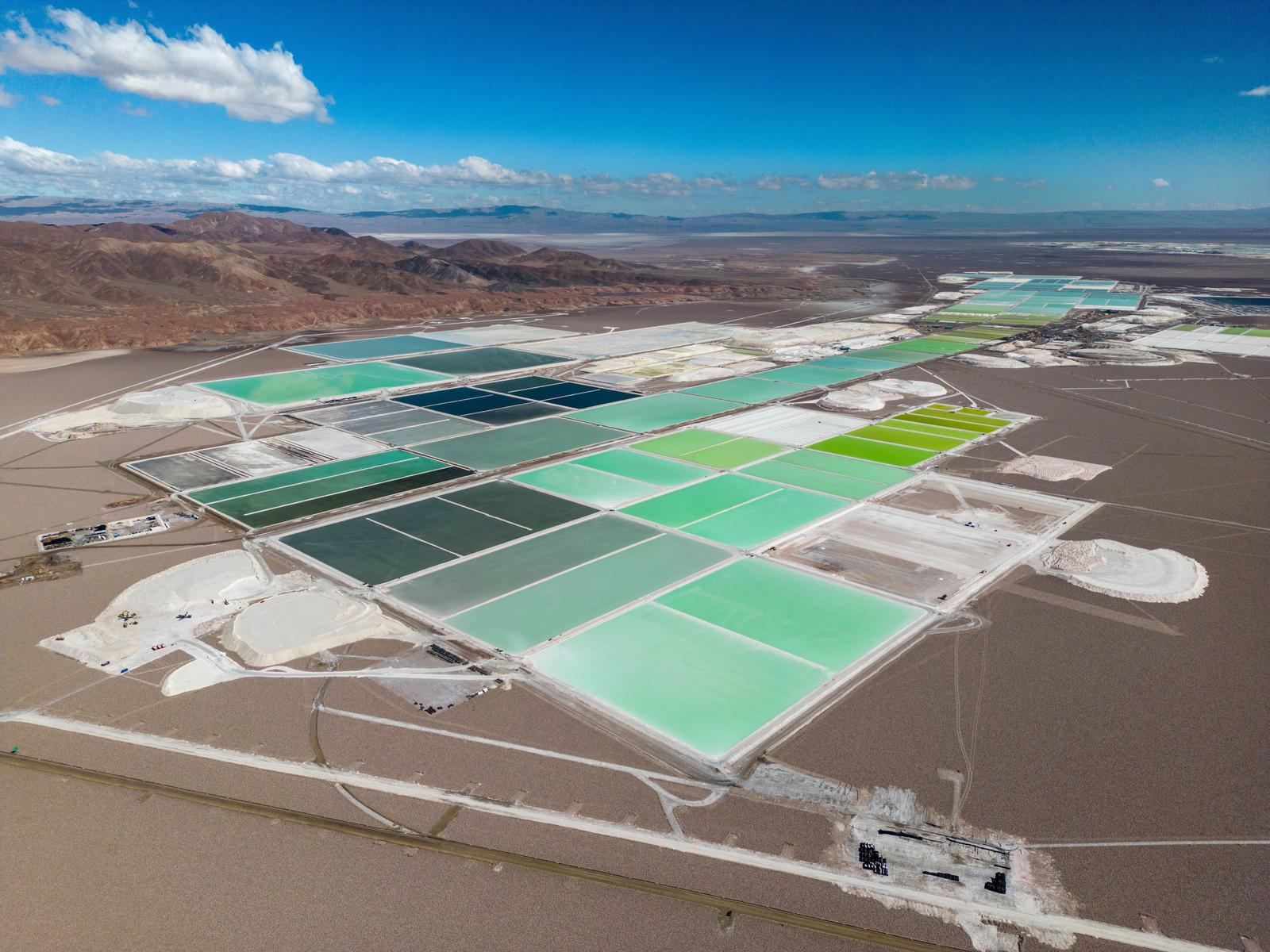
A nightmarish scenario for critical mineral supply: Geopolitical fragmentation between the world’s major superpowers could substantially increase the prices of critical minerals, resulting in a decreased global investment — by as much as 30% — in renewables and EVs by 2030, the third chapter (pdf) of the International Monetary Fund’s (IMF) October 2023 World Economic Outlook found. The report — released yesterday on the sidelines of the Annual Meetings in Marrakesh — assesses the impact of global tensions on the prices of cobalt, lithium, copper, and nickel, critical minerals needed for the green transition. Decarbonizing the world economy would be more difficult if the market for minerals is fragmented, the report concludes.
A world divided in two: For illustrative and analytical purposes on how political conflicts can hamper trade in critical commodities, the IMF ran a model with the main scenario assuming that two theoretical blocs are constructed based on the 2022 UN vote on Russia’s war in Ukraine, with one bloc labeled the “US-Europe+ bloc,” and the other being the “China-Russia+ bloc.” The exercise assumes that there is no trade in a particular commodity between blocs, whereas intra bloc trade of the commodity is unaffected.
Supply disruptions and fluctuations: “Roughly half of the world’s countries rely on three or fewer exporting countries for their imports of minerals, and a quarter on only one,” the IMF says, adding that this leaves importers vulnerable to supply disruptions in the near term. The IMF singles out minerals as the commodity most at risk of price fluctuations given that both the production and processing stages are concentrated in a few countries, unlike other goods. The production stage cannot be diversified due to the geographic concentration of deposits, while relocating the processing stage may be impossible over the short and medium term, given the importance of the workforce’s acquired skills, the Fund explains.
The political blocks are likely to be impacted differently: The price of a commodity falls in the bloc that used to be a net exporter of that commodity and increases in the net importing bloc, the report outlines. Given that 80% of the supply of the four minerals is mined in the US-Europe+ bloc, the results of the simulation show that the price of the minerals under study would rise substantially in the China-Russia+ bloc in parallel to sizable declines in real GDP. The US-Europe+ bloc could experience similar increases in the prices of refined minerals, which are processed mostly in China, Russia, and South Africa. However, the US-Europe+ bloc would not be able to reap the benefits from the relative oversupply of minerals at the mining stage since it would take several years to scale up mineral refining capacity.
To what extent are the blocs impacted under the simulation? If critical mineral markets are fragmented, the inability of the China-Russia+ bloc to import copper, nickel, lithium, and cobalt from countries (such as Chile and Indonesia) would lead to an additional price increase in that bloc of 300% on average compared to the baseline scenario of an integrated world. Acquiring minerals would be more expensive, which would lead to lower investment in solar panels and wind turbines and fewer EVs. In this net zero scenario, there would be about 70% fewer new EVs in the China-Russia+ bloc in a fragmented world compared to an integrated one. On the other hand, due to an expected slow scale up for mineral refining, fragmentation generates only small gains in the US-Europe+ bloc, with a slightly higher number of EVs produced, but no gains in renewable energy capacity by 2030. On balance, global net investment in renewable technology and production of EVs would be roughly 20% lower compared with the baseline because of mineral market fragmentation.
How can we plan ahead of potential fragmentations? The findings demonstrate a strong need for multilateral cooperation on trade policies. Agreements on a “green corridor” for critical minerals would safeguard the global goals of averting climate change, the IMF suggested, adding that the corridor could preserve integrated markets for minerals that are critical for decarbonization. “Without underestimating the political difficulties, such a corridor agreement could be easier to agree on, because it would focus on a smaller set of commodities and countries,” according to the Fund.
CLIMATE DIPLOMACY
Oman and Hungary agree to collaborate on low carbon and clean hydrogen
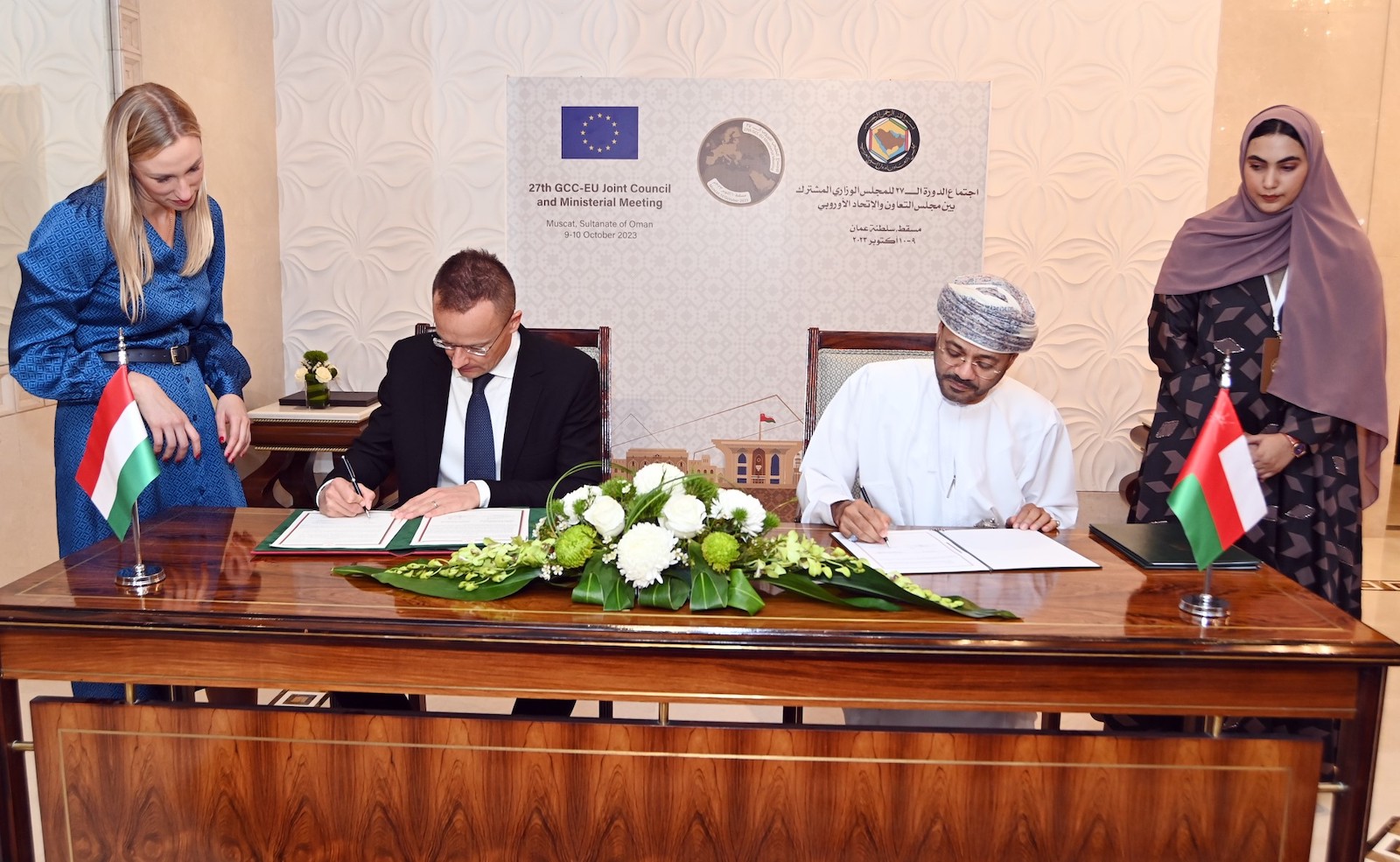
Oman, Hungary signs pact on renewable hydrogen: Oman’s Foreign Minister Sayyid Badr Albusaidi and Hungarian Foreign Minister Peter Szijjarto signed an MoU to cooperate in the fields of low-carbon and clean hydrogen, Oman News Agency reports. No further details were disclosed, but both ministers discussed bolstering cooperation between the two countries in renewable energy and the production of green hydrogen.
REMEMBER- The sultanate is hitting the gas pedal on renewables + green hydrogen: Oman is courting request for qualifications for five new wind energy projects, three solar PV projects, and a waste-to-energy project by the end of the year and plans to become the sixth-largest exporter of hydrogen globally. Oman’s state-owned green hydrogen company Hydrom signed six binding term sheet agreements worth a combined USD 20 bn for the production of green hydrogen last March.
ALSO ON OUR RADAR

CLEAN ENERGY-
Iran’s Atomic Energy Organization (AEOI) kicked off construction on the second reactor of its EUR 1.8 bn Bushehr nuclear power plant on Sunday, the Iran News Agency reports. Built by Russia’s state-owned nuclear company Rosatom, the initial 1 GW phase of the project has delivered some 60 bn KWh of electricity since coming online in 2013, including 7 bn KWh last year and 3.5 mn MWh of clean power from the start of the Iranian calendar year on March 21, according to Mehr News Agency. The Iranian government plans to complete and bring online the second unit “in less than five years”, and then kick off operations on the third phase of Bushehr 1.5 years after that, AEOI chief Mohammad Eslami said. The second and third units would increase Bushehr’s power capacity by 104%, extending the power plant’s fuel cycle by up to 18 months and pushing down the country’s reliance on oil by an estimated 10 mn barrels per year. The two planned units would result in USD 1.6 bn worth of gas savings and offset some 7 mn tons of greenhouse gas emissions, Mehr quotes lead project engineer Masoud Nasouri as saying.
Iran approves a 15 GW solar production strategy: Iran’s Economic Council approved a plan to develop additional solar energy projects in the country with a combined 15 GW production capacity last week, the Iran News Agency quotes the country’s First Vice President Mohammad Mokhber as saying. The plan would be carried out with help from Iran’s private sector over three phases and have an estimated USD 8.3 bn investment ticket. No timeline on when the projects would be completed was provided.
Plans in play: Iran’s Renewable Energy and Energy Efficiency Organization (Satba) said it plans to re-tender solar energy projects yielding 2.2 GW during the current Iranian fiscal year in a bid to expand net-zero power production. In July, Satba said it will build a 1 GW solar farm in Qazvin, and last month the organization committed to buying 1.5 GW of solar power from 10 domestic developers in what it described at the time as the largest agreement of its kind in the country. Last year, Iran said it plans to add 10 GW of renewable capacity by August 2025.
CONSERVATION-
Endangered corals spring back to life in Oman: Oman’s Six Senses Zighy Bay resort successfully completed the first phase of its two-year coral restoration program aimed at reviving the Acropora and Pocillopora coral species, Trade Arabia reported. The resort’s diving center collected 522 coral fragments and attached them in groupings to 10 metal frames anchored to the seafloor to increase the coral's likelihood of surviving until maturity, resulting in robust growth within six months. The resort hopes to replicate across its shores in efforts to repopulate the entire reef.
OTHER STORIES WORTH KNOWING ABOUT THIS MORNING-
- KSA unveils its national forestation roadmap: Saudi Arabia’s government has announced a roadmap for planting some 10 bn trees in the country under its USD 186 bn Saudi Green Initiative. The forestation program aims to reduce temperature levels by “at least 2.2 °C” in the urban areas where the project will be implemented. (SPA)
AROUND THE WORLD
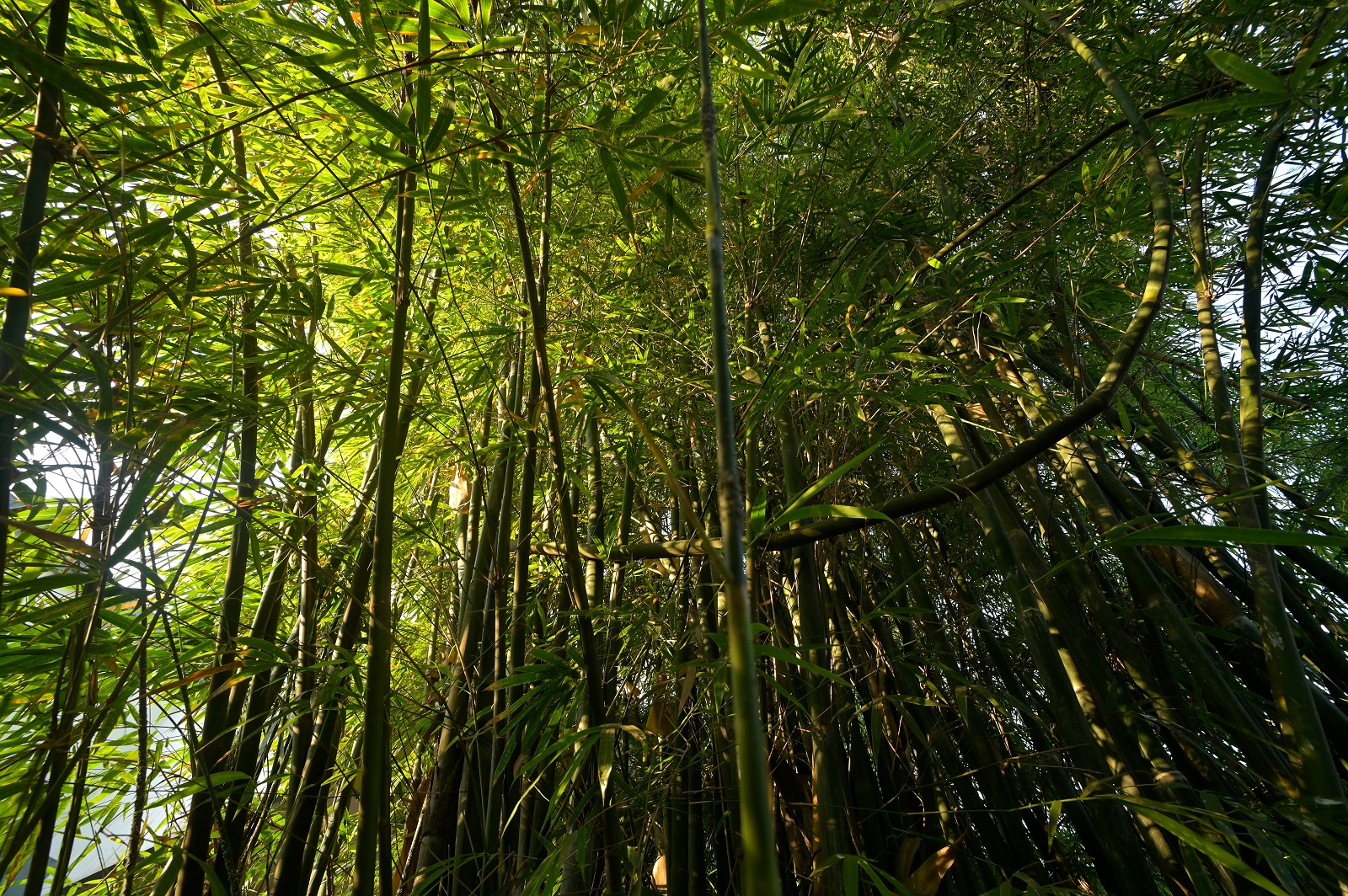
India to begin bamboo-based biofuel production next year: India's Numaligarh Refinery Ltd (NRL) — a subsidiary of state-owned oil company Oil India — will kick off operations on the country’s first bamboo-based ethanol generation refinery next March, Bloomberg quotes the company’s Managing Director Bhaskar Phukan as saying. The biofuels plant is part of government plans to up its ethanol-gasoline mixing capacity to 20% by 2025 from the current 12% blending levels. The plant is being built by NRL, Finnish state-owned energy firm Fortum, and biorefinery tech company Chempolis at an INR 40 bn investment ticket (c. USD 480.5 mn), Reuters reports. It is expected to have an annual production capacity of 50k tons of ethanol. The bamboo refinery will also have a 16k tons yearly generation volume of furfural and an 11k ton acetic acid output.
EIB snaps up a portion of Valeo’s maiden green bond: The European Investment Bank (EIB) purchased EUR 150 mn (c.USD 158 mn) of a EUR 600 mn green bond issuance by French automaker Valeo, according to a statement. Valeo says it will channel proceeds from the 5.5 year green note issuance to develop green and low carbon technologies to accelerate the transition to net-zero sources and boost its green mobility portfolio as it works towards its 2050 carbon neutrality commitment. The company has identified around EUR 2 bn eligible clean energy tech projects it could funnel funds toward, including in renewables, energy efficiency, sustainable water and waste water management, and the circular economy.
More to come? The EIB — which has pumped around EUR 750 mn in green financing for the auto sector since 2020 — plans to support up to EUR 1 tn of green investments in the bloc and is “selectively assessing” other investments under its new green bond purchase program, a company spokesperson told Bloomberg.
OTHER STORIES WORTH KNOWING ABOUT THIS MORNING-
- Global coal industry set to shed 37% of its workforce by mid-century: Expected closures at operating coal mines globally are forecast to cut an estimated 1 mn jobs by 2050. Commitments to transition away from coal to meet the Paris-agreed 1.5°C warming threshold would leave less than 10% of the current workforce — only 252.k miners — employed by 2040. (Global Energy Monitor)
CLIMATE IN THE NEWS

Beer fans, whomp whomp: A warming planet is already altering the taste and quality of beer unless farmers adapt to rising temperatures and protect their yields, The Guardian reports, citing a study warning of the impacts of climate change on the world’s third-most popular drink. The study argues climate change is affecting the quantity and quality of hops, a main ingredient in most beer. “Beer drinkers will definitely see the climate change, either in the price tag or the quality … that seems to be inevitable from our data,” study co-author Miroslav Trnka said.
By the numbers: Scientists see hop yields in growing regions in Europe would decline by 4% to 18% by 2050 if farmers don’t seek adaptation methods to the higher temperatures. The content of alpha acids in the jobs, which give the popular drink its special taste and smell, will plunge by 20% to 31% by mid-century.
Just a buzzkill: The climate crisis is expected to have a heavy toll on the beer-brewing industry in central Europe which is a keystone of its culture, The Guardian notes. The population in the Czech Republic are the world’s top beer drinkers, according to data from Japanese beer company Kirin. Germany’s Oktoberfest welcomes 6 mn beer drinkers from all over the world annually, with the beer-loving country regulating the industry through a “purity law” for 500 years.
ON YOUR WAY OUT
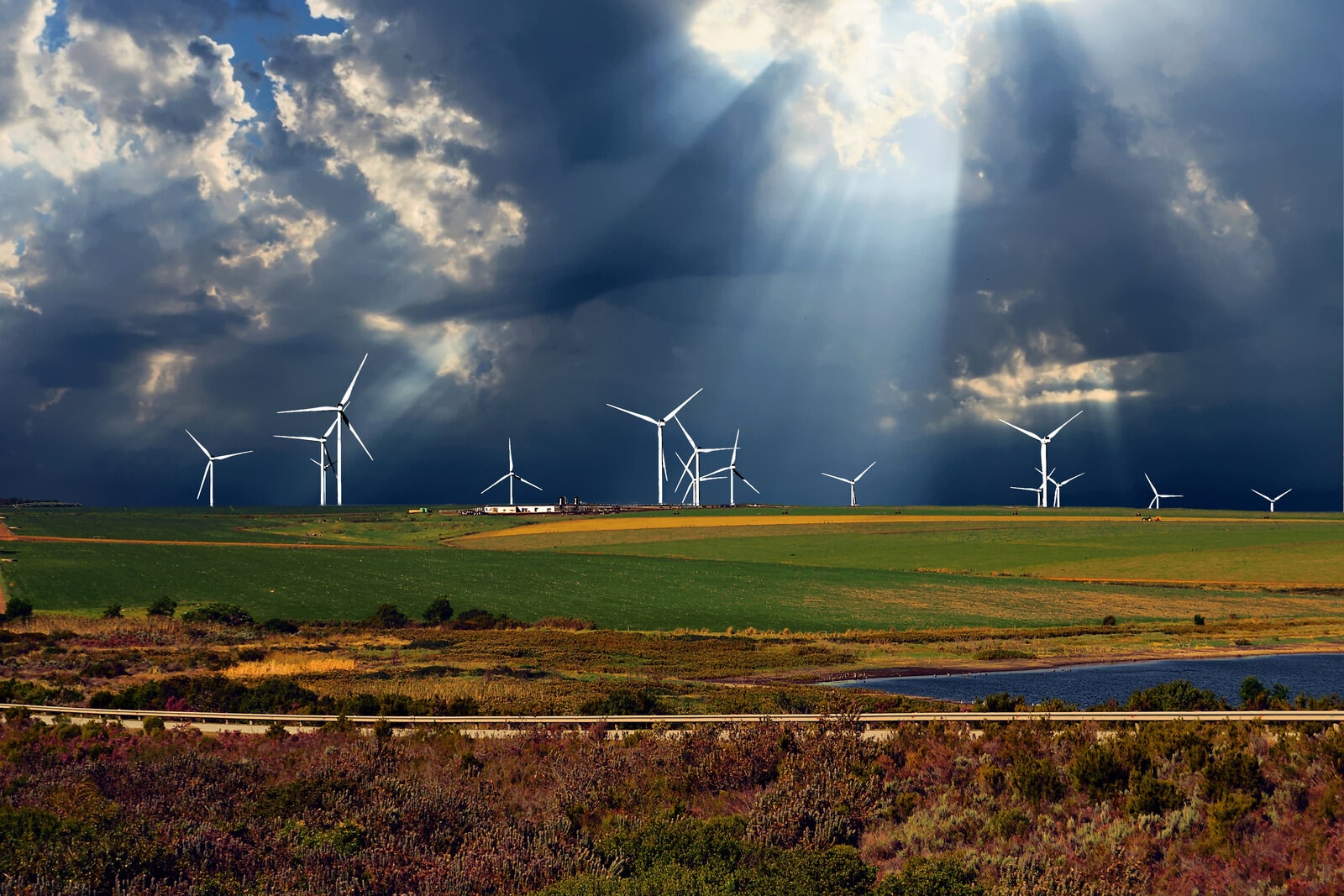
South Africa is introducing virtual wheeling next year: South Africa's virtual renewable electricity transmission model is scheduled to start operations by the end of 2024, Reuters reports, citing Eskom’s distribution network analyst Onicah Rantwanea. The virtual wheeling method allows consumers to buy renewable power from any producer across the country via a platform expected to make power from large renewable producers available to smaller users, including standalone buildings, housing societies and factories. South Africa is the first to introduce this new technique of transporting electric energy, law consultant firm Cliffe Dekker Hofmeyr said.
How does it work: Unlike traditional wheeling, where the delivery of energy occurs from big private renewable energy generating companies to big private distribution companies in a one-to-one transaction, virtual wheeling can connect multiple buyers with multiple sellers through a technology platform that aggregates supply and consumption data to produce a single bill for consumers, the newswire explains. This digital mechanism allows Eskom to refund a single buyer — likely a corporate entity such as a real estate development — while individual offtake sites or customers continue to consume electricity and be billed by Eskom, Cliffe Dekker Hofmeyr explains, citing Eskom’s brochure (pdf) breaking down the new policy. In that way, Eskom, rather than the corporate entity, would need to pay the upfront cost for generating and wheeling energy.
Why switch away from traditional wheeling? Some regulatory and practical factors can limit the ability of traditional wheeling to cater to energy supply solutions. For example, a lack of local wheeling frameworks — inclusive of a tariff and billing policy — is common given that municipalities hold off on releasing any regulation until a unified national policy is released, which could often take years, according to Cliffe Dekker Hofmeyr. Other barriers include buyers or municipalities needing to amend their electricity supply agreement with Eskom in order to ensure that wheeling credits are accounted for. The complicated steps become a problem for energy buyers with multiple offtake sites in various locations, each with a different point of connection to the transmission and distribution network. This is often the case for the real estate sector, large retail stores, warehouses and offices.
A lifeline for South Africa’s deteriorating grid conditions: Since last year, Eskom has been increasingly struggling to maintain its aging plants and transmission grid, forcing it to implement a record number of daily power cuts — which can reach up to 10 hours a day — to prevent a grid collapse. By opening up the supply and demand markets for energy, citizens could rapidly ramp up their renewable power consumption, reducing the burden on the ailing state utility.
CALENDAR
OCTOBER 2023
8-12 October (Sunday-Thursday): MENA Climate Week, Riyadh, Saudi Arabia.
9-15 October (Monday-Sunday): World Bank/IMF 2023 Annual Meetings, Marrakech, Morocco.
10-11 October (Tuesday-Wednesday): Green Energy Africa Summit, Cape Town, South Africa.
10-12 October (Tuesday-Thursday): Autonomous E-Mobility Forum, Doha, Qatar.
16-17 October (Monday-Tuesday): Duqm Economic Forum, Duqm, Oman.
16-18 October (Monday-Wednesday): Climate Week, Rome, Italy.
16-20 October (Monday-Friday): UNCTAD World Investment Forum, Abu Dhabi, UAE.
18-20 October (Wednesday-Friday): Morocco and Belgium business meeting on green hydrogen, Tangiers, Morocco.
17-18 October (Tuesday- Wednesday): Critical Minerals Africa Summit, Cape Town, South Africa.
17-19 October (Tuesday-Thursday): Energy Intelligence Forum, London, UK.
17-20 October (Tuesday-Friday): Fourth meeting of the COP27 Transitional Committee, Aswan, Egypt.
25-26 October (Friday-Saturday): Offshore & Floating Wind Europe 2023, London, United Kingdom.
29 October-2 November (Sunday-Thursday): Cairo Water Week, Cairo, Egypt
30 October – 1 November (Monday-Wednesday) ISWA 2023 World Congress: Global action towards a net-zero future, Muscat, Oman.
31 October-2 November (Tuesday-Thursday): Financial Times’ Energy Transition Summit, London, UK.
31 October-2 November (Tuesday-Thursday): World Hydropower Congress, Bali, Indonesia.
NOVEMBER 2023
1-3 November (Wednesday-Friday): Forbes Middle East Sustainability Leaders Summit 2023, Abu Dhabi, UAE.
7-8 November (Tuesday-Wednesday): ADIA Lab Symposium on Climate Change and Health Sciences, Abu Dhabi, UAE.
7-8 November (Tuesday-Wednesday): The 2023 US Algeria Energy Forum, Washington DC, USA.
9-10 November (Thursday-Friday): International Renewable Energy Agency Investment Forum, Uruguay.
9-15 November (Thursday-Wednesday): Intra-African Trade Fair 2023, Cairo, Egypt.
11-13 November (Saturday-Monday): GCC-Türkiye Economic Forum, Istanbul, Turkey.
15-17 November (Wednesday-Friday): WETEX and Dubai Solar Show, Dubai, UAE.
15-18 November (Wednesday-Saturday): DEWA’s First MENA Solar Conference, Dubai, UAE.
20-24 November (Monday-Friday) International Civil Aviation Organisation’s Aviation and Alternative Fuels conference, Dubai, UAE.
27-30 November (Monday-Thursday) Abu Dhabi Finance Week (ADFW), Abu Dhabi, UAE.
28-29 November (Tuesday-Wednesday): World Green Economy Summit (WGES), Dubai, UAE.
30 November – 12 December (Thursday-Tuesday): Conference of the Parties (COP 28), Dubai, UAE.
DECEMBER 2023
4 December (Monday): Saudi Green Initiative Forum, Dubai, UAE.
4 December (Monday): Abu Dhabi Sustainability Week (ADSW) summit, Dubai, UAE.
8 December (Friday): Youth for Sustainability Forum (Y4S), Dubai, UAE.
12-14 December (Tuesday-Thursday): Green Hydrogen Summit Oman, Oman Convention and Exhibition Center, Muscat, Oman.
18-20 December (Monday-Wednesday): Saudi Arabia Smart Grid Conference, Hilton Riyadh Hotel & Residences, Riyadh, Saudi Arabia.
JANUARY 2024
9-11 January (Tuesday-Thursday): Future Minerals Forum, Riyadh, Saudi Arabia.
FEBRUARY 2024
26-28 February (Monday-Wednesday): Management and Sustainability of Water Resources, Dubai, UAE.
MARCH 2024
4-6 March (Monday-Wednesday): International Conference on Sand and Dust Storms in the Arabian Peninsula, Riyadh, Saudi Arabia.
APRIL 2024
16-18 April (Tuesday-Thursday): World Future Energy Summit, Abu Dhabi, UAE.
23-25 April (Tuesday-Thursday): Connecting Green Hydrogen MENA, Dubai, UAE.
MAY 2024
19-21 May (Sunday-Tuesday): Saudi Energy Convention, Riyadh, KSA.
JUNE 2024
5 June (Wednesday): World Environment Day, Saudi Arabia.
DECEMBER 2024
2-13 December (Monday-Friday): Conference of the Parties (COP16) to the United Nation Convention to Combat Desertification, Riyadh, KSA.
EVENTS WITH NO SET DATE
2023
Mid-2023: Oman set to sign contracts for green hydrogen projects.
Mid-2023: Sale of Sembcorp Energy India Limited to consortium of Omani investors to close.
Phase C of the 900-MW of the Mohammed bin Rashid Al Maktoum Solar Park in Dubai to be completed.
Saudi Basic Industries Corporation (Sabic) steam cracker furnace powered by renewable energy to come online.
2024
12-14 February (Monday-Wednesday): Sustainable Aviation Futures MENA Congress, Dubai, UAE.
End-2024: Emirati Masdar’s 500 MW wind farm in Uzbekistan to begin commercial operations.
QatarEnergy’s industrial cities solar power project will start electricity production.
2025
International Union for Conservation of Nature World Conservation Congress, Abu Dhabi, UAE.
UAE to have over 1k EV charging stations installed.
2026
UITP Global Public Transport Summit, Dubai, UAE.
1Q 2026: QatarEnergy’s USD 1 bn blue ammonia plant to be completed.
End-2026: HSBC Bahrain to eliminate single-use PVC plastic cards.
2027
MENA’s district cooling market is expected to reach USD 15 bn.
2030
UAE’s Abu Dhabi Commercial Bank (ADCB) wants to provide AED 35 bn in green financing.
UAE targets 14 GW in clean energy capacity.
Tunisia targets 30% of renewables in its energy mix.
Qatar wants to generate USD 17 bn from its circular economy, creating 9k-19k jobs.
Morocco’s Xlinks solar and wind energy project to generate 10.5 GW of energy.
2035
Qatar to capture up to 11 mn tons of CO2 annually.
2045
Qatar’s Public Works Authority’s (Ashghal) USD 1.5 bn sewage treatment facility to reach 600k cm/d capacity.
2050
Tunisia’s carbon neutrality target.
2060
Nigeria aims to achieve its net-zero emissions target.
Enterprise Climate is available without charge thanks to the generous support of HSBC (tax ID: 204-901-715), the leading corporate and retail lender in Egypt; and Infinity Power (tax ID: 305-170-682), the leading generator and distributor of renewable energy in Africa and the Middle East. Enterprise Climate is delivered Mon-Thurs before 4 am UAE time. Were you forwarded this copy? Sign up for your own delivery at climate.enterprise.press. Contact us on climate@enterprisemea.com.


